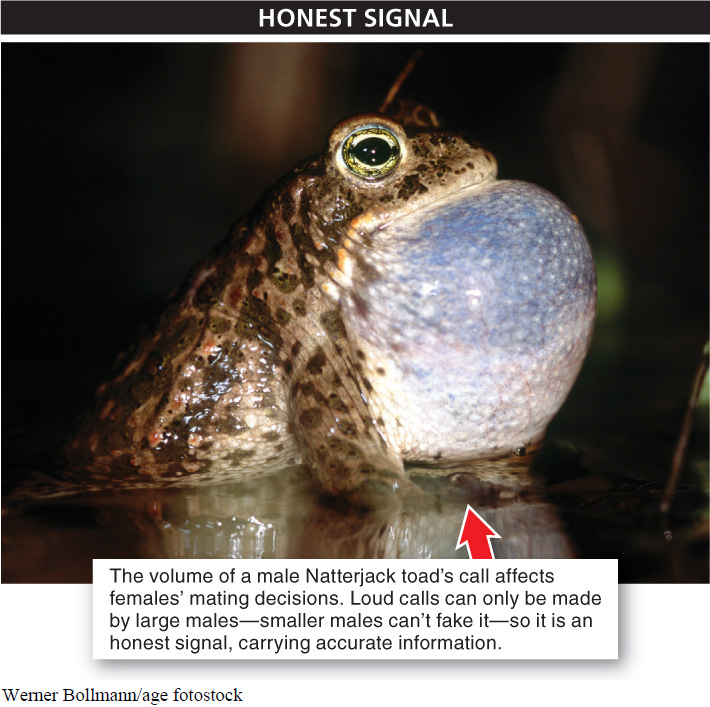9.18: Honest signals reduce deception.
Among Natterjack toads, found in northern Europe, males produce booming calls to attract females. Because females desire large males and size determines the volume of the calls, females will push their way through murky swamps until they reach the loudest croaker. They are drawn by calls that can be heard a mile away and are often louder than the legal noise limit for a car engine (FIGURE 9-30).

The Natterjack’s call is an honest signal, a signal that cannot be faked and is given when both the individual making the signal and the individual responding to it have the same interests. An honest signal is one that carries the most accurate information about an individual or situation, and animals that respond to signals of any sort have evolved to value most highly those signals that cannot be faked. A loud Natterjack’s call, for example, cannot be faked by a small Natterjack toad. And so there is evolutionary pressure for animals to both produce and respond to honest signals, because these behaviors enable them to maximize their fitness by selecting the best possible mate.
When one animal can increase its fitness by deceiving another, deception can also be expected to evolve. An example might be baby birds begging for food from their parent. If an allele that causes a chick to exaggerate its need for food leads to faster growth and better health for that individual, the allele is likely to increase in frequency in the population.
Communication and signaling, therefore, are features of populations that are continually evolving. We would expect this evolutionary “arms race” between honest signals and deception to lead, over time, to both increasingly unambiguous signals and ever more sophisticated patterns of deception.
In this chapter, we’ve seen how our understanding of the behavior of animals, including humans, has been greatly expanded by applying scientific thinking, an experimental approach, and careful consideration of the process by which the evolutionary mechanism of natural selection shapes populations. We return to an important point highlighted at the beginning of this chapter: an organism’s phenotype is not limited to its physical traits but includes its behaviors as well. Consequently, behaviors respond to selective pressures and evolve.
TAKE-HOME MESSAGE 9.18
Animals have evolved to rely primarily on signals that cannot easily be faked, in order to gain the maximum amount of information.
What is an honest signal?
398